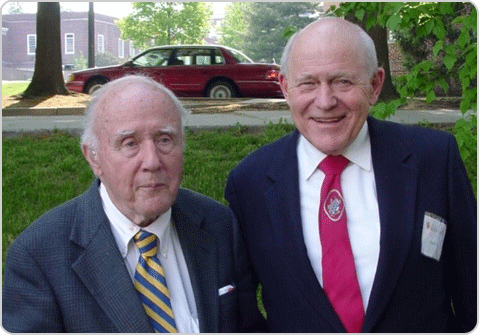- Details
-
Published: Thursday, September 15 2011 13:15
Condensed Matter Theory Lecture Set for Oct. 25 at UMD
COLLEGE PARK, Md. -- Nobel laureate Daniel C. Tsui of Princeton University has been named the 2011 recipient of the Richard E. Prange Prize and Lectureship in Condensed Matter Theory and Related Areas. Dr. Tsui will receive a $10,000 honorarium and deliver a public presentation entitled “More Is Indeed Different: An Example from Electron Physics in Semiconductors” at the University of Maryland, College Park, on Oct. 25, 2011. He was awarded the 1998 Nobel Prize in physics with Horst Stormer for experimental work in 1982 leading to the discovery of the fractional quantum Hall effect in semiconductors. The fractional quantum Hall effect is an emergent property of macroscopic matter similar to superconductivity or magnetism. The phenomenon has profoundly affected the theoretical understanding of how nature organizes large collections of interacting electrons, giving birth to the subject of “topological condensed matter physics”.
The Prange Prize, established by the UMD Department of Physics and Condensed Matter Theory Center (CMTC), honors the late Professor Richard Prange, whose distinguished professorial career at Maryland spanned four decades (1961-2000). The Prange Prize is made possible by a gift from Dr. Prange's wife, Dr. Madeleine Joullié of the University of Pennsylvania.
Dr. Tsui, a native of China’s Henan Province, received his Ph.D. from the University of Chicago in 1967. He then accepted a research job at Bell Laboratories in Murray Hill, New Jersey, where he specialized in the physics of two-dimensional electrons in semiconductor structures. In 1982 he moved to Princeton University, where he is the Arthur LeGrand Doty Professor of Electrical Engineering. Dr. Tsui is a member of the National Academy of Sciences and a fellow of the American Physical Society and of the American Association for the Advancement of Science. He has received the APS Buckley Prize and the Franklin Institute’s Benjamin Franklin Medal in physics. His Prange Prize lecture will be delivered at the University of Maryland's John S. Toll Physics Building at 4:00 p.m. on Tuesday, Oct. 25 in the Lecture Hall, Room 1412. The event is open to the public.
Dr. Richard Prange also received his doctorate at the University of Chicago, where he worked with Nobelist Yoichiro Nambu, among others. He is well known as the editor of a highly-respected book on the quantum Hall effect and for his own theoretical contributions to the subject. But his interests extended into all aspects of theoretical physics. He was at complete ease discussing topics as disparate as ferromagnetism and the cosmological constant.
"Richard enjoyed a fascinating and fulfilling career at the University of Maryland exploring condensed matter physics, and even after retirement was active in the department," said Dr. Joullié. "He spent the very last afternoon of his life in the lecture hall for a colloquium on graphene, followed by a vigorous discussion. And so I was happy to institute the Prange Prize, to generate its own robust discussions in condensed matter theory."
Dr. Prange was a member of the Maryland condensed matter theory group for more than 40 years and was an affiliate of CMTC since its inception in 2002.
"The Prange Prize provides a unique opportunity to acknowledge transformative work in condensed-matter theory, a field that has proven to be an inexhaustible source of insights and discoveries in both fundamental and applied physics, said Dr. Sankar Das Sarma, who holds the Richard E. Prange Chair in Physics at UMD and is also a Distinguished University Professor and Director of the CMTC.
The prize was inaugurated in 2009, with a lecture by Nobel Laureate Philip W. Anderson. Nobelist Walter Kohn received the second Prange Prize in 2010.
###
Directions to the College Park campus can be found here: http://www.cvs.umd.edu/visitors/maps.html To locate the Physics Building, see the campus map at: http://www.cvs.umd.edu/downloads/campus%20map%20012309.pdf .
University of Maryland Physics: http://umdphysics.umd.edu/
College of Computer, Mathematical and Natural Sciences: http://www.cmns.umd.edu/
Condensed Matter Theory Center: http://www.physics.umd.edu/cmtc/

